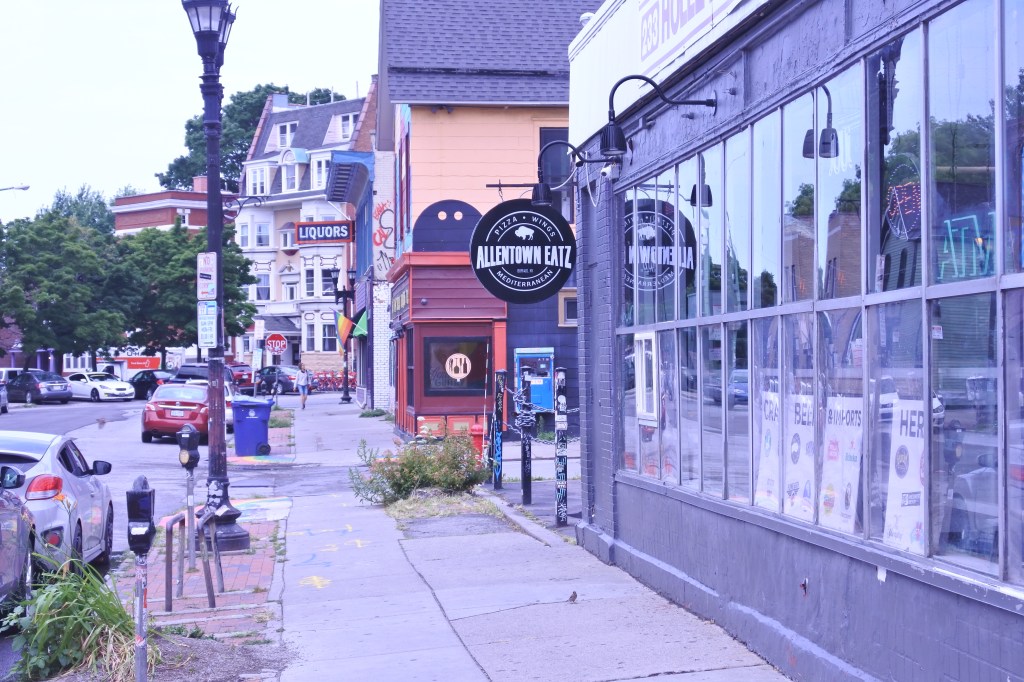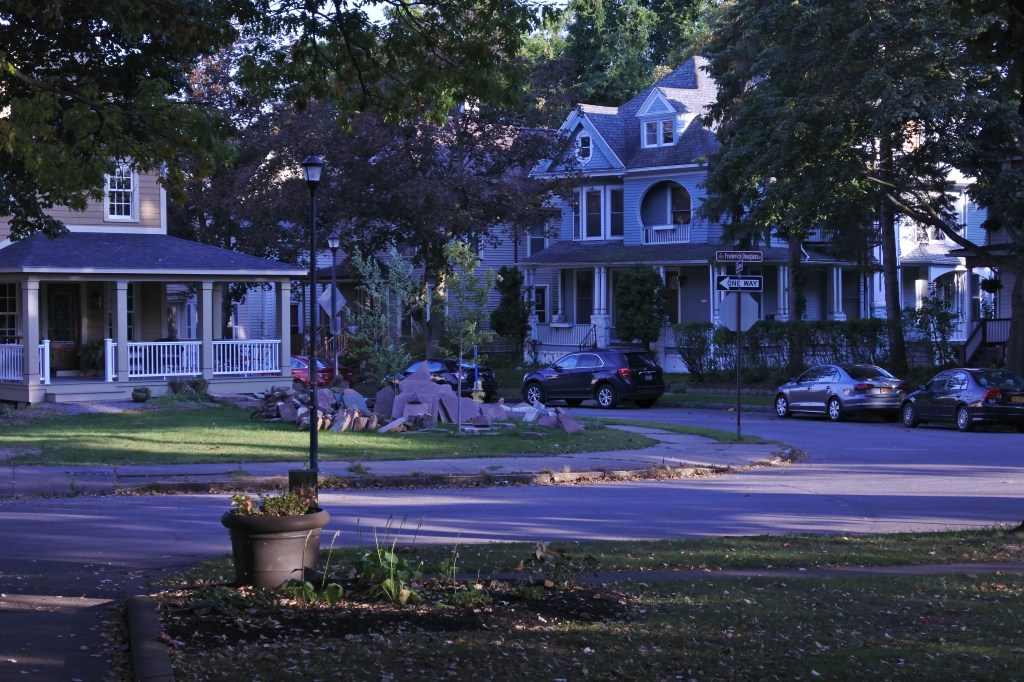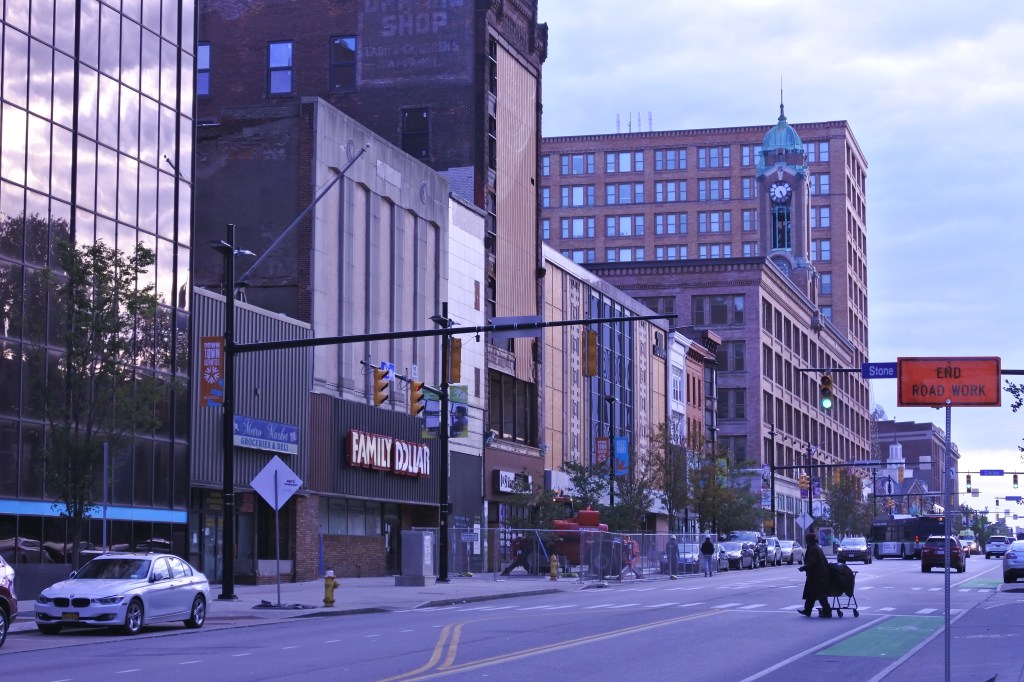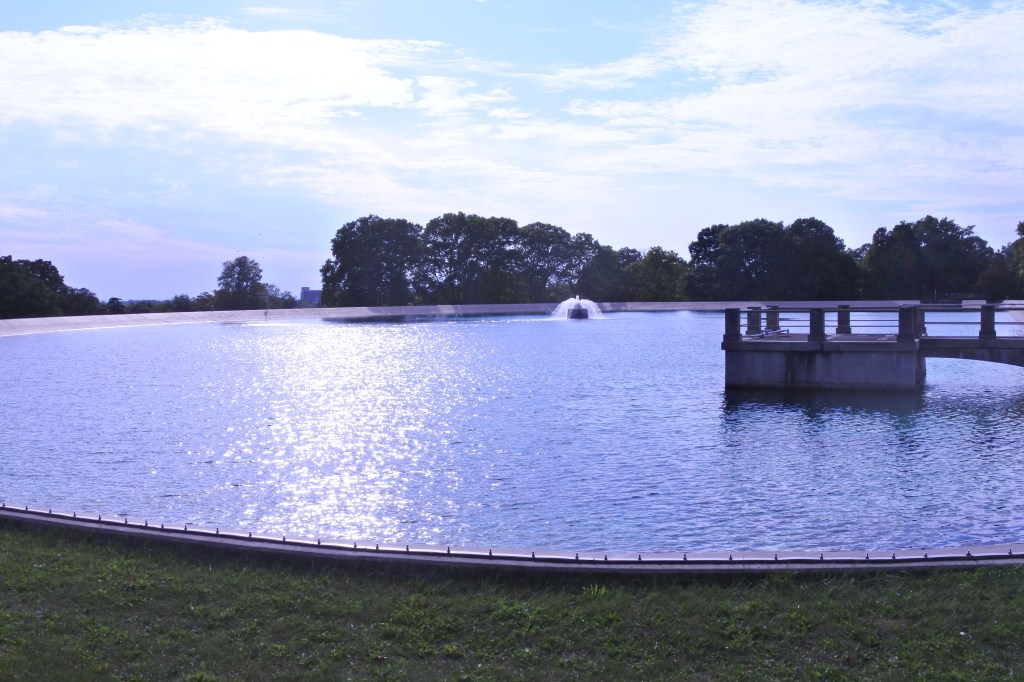My evaluation of Downtown Buffalo includes the entire area between Elmwood and Michigan from west to east and Tupper St to the north south to the Buffalo River. In the Southwest corner of Dwtn where Elmwood Ave turns to the Buffalo Skyway as it doglegs right, I draw an imaginary straight line south to Erie St and thus catch more of the waterfront in this evaluation.
One can tell that Downtown Buffalo was once a grand City by the Historic Architecture still largely in tact. Downtown has a wonderful array of antique skyscrapers (i.e. City Hall, the Electric Tower, Guaranty Bldg, Rand Bldg, Liberty Bldg, etc.). Buffalo’s Art Deco City Hall is one of my favorite City Halls in America. But Downtown Buffalo has struggled to built momentum even since the return to the City movement of the 1990s. Apartment bldg conversions have been limited, the Main Street pedestrian mall conversion of the 70s and construction of Main Place Mall largely failed, and much of Dwtn has languished and feels pretty dead after 9-5 work hours.
Things started to improve for Downtown Buffalo since 2014 with the Canalside development opened new apartment bldgs, office space, and the a new hocky area. This is south of what I consider the core of Dwtn Buffalo. More recently, a plethora of residential conversion and new projects have been announced for the core of Downtown. Main street is being converted back to car traffic (fortunately with major streetscaping and renovation dollars fixing its mostly in-tact but often vacant building stock). Downtown Buffalo still has a long way to go to catch up to the likes of Dwtn Cleveland, Buffalo, Cincy, and Pittsburgh but it seems poised to make significant progress in the 2020s.

URBAN STRENGTHS:
* ADA infrastructure is generally good but some under invested intersections at the edges of Dwtn with proper curb cuts.
* Downtown Buffalo serves as a solid huge for public transit in the region. At least good public transit through the entire City of Buffalo. This extends a bit to the inner ring suburbs but quickly drops off.
* Good connectively in Dwtn and a nice set of diagonal streets similar to Detroit (but not as good). Lots of wide street s though. Fortunately most of them are 2-ways many have bike lanes on them.
* Dwtn has a nice array of bike lanes. Within the City there is great bike lane coverage along the lake, which extends well north of the City. An ok # of bike lanes in the City. Not great coverage in the suburbs. Great bike share system covering about 60% of the City and extending to some of the northern suburbs.
* Generally good diversity dwtn reflected in its residential demographics and activities. Plenty to do for kids with the AAA ballpark, children’s museum, ships, and other museums.
* Nice concentrations of schools across all grades. Mix bag with ratings.
* Decent college presence dwtn with several smaller colleges adding up to an enrollment of about 5K.
* Pre-pandemic Buffalo had about 50K jobs, a high number for its metro size. Total office space was pretty flat pre-pandemic and vacancy pretty height at ~25%.
* Dwtn is a major gov’t jobs center helped with its large Art Deco City bldg and several court houses. It also hosts a convention center, ballpark & NHL hockey arena & a smaller hocky arena next door. Historic post office is no longer a post office. Large modern library.
* Culturally many theaters (many historic), a cineplex, lots of live music venues & night clubs, plenty of restaurants, bars & cafes, several art galleries, and many museums.
* Great historic architecture. One of the best for its size.
* Buffalo generally holds its urban form together. Only a few streets like Main street are mostly in-tact but most areas of dwtn have over 60% of bldgs remaining. The eastern and southern edges host the most surface parking and low intensity bldgs.
URBAN WEAKNEESES:
* Density is pretty low here. Not a ton of hsg in Dwtn Buffalo.
* For sale housing is pretty limited in Dwtn. Not even any studio options. Some 1-beds (esp. near the waterfront), these sell btwn 200K-350; 2-beds sell btwn 300K-800K, 3-beds are concentrated along the waterfront and sell btwn 500K-1.2M.
* Rentals are very limited for a dwtn area but at least are moderately priced. 1-beds lease in the low 1Ks, 2&3 beds 1.5K-3K.
* Parks are pretty underwhelming Dwtn. There are a handful of nice smaller parks (i.e. Lafayette, Fireman’s, Niagara Sq, Fountain Plaza & Roosevelt) but nothing is outstanding. Decent park at Canalside a waterfront trail for about 1/4 of a mile.
* Fountain Plaza is Buffalo Civic heart but is pretty mediocre in my opinion. The fountain takes up more than half of the space. Some seating and another fountain.
* Pedestrian activity dwtn is so .
* Buzz is slowing growing for Dwtn Buffalo but its coming from a pretty low point. Locals have loathed their Dwtn for a long time.
* Retail amenities are a bit limited dwtn. The best amenity is a local supermarket. Dwtn has a drug store, a handful of boutiques & clothing stores, several banks & dessert joints, plenty of gyms & churches, and decent access to Buffalo General a mile away. Retail amenities dwtn went downhill when the Main Place Mall closed.
* Modern in-fill Dwtn is so . Handful of mid century towers, a couple 80s/90 office bldgs, and some better modern in-fill at Canalside. The Convention Center and the Main Place Mall are examples of unattractive 1960s-1970s in fill.








